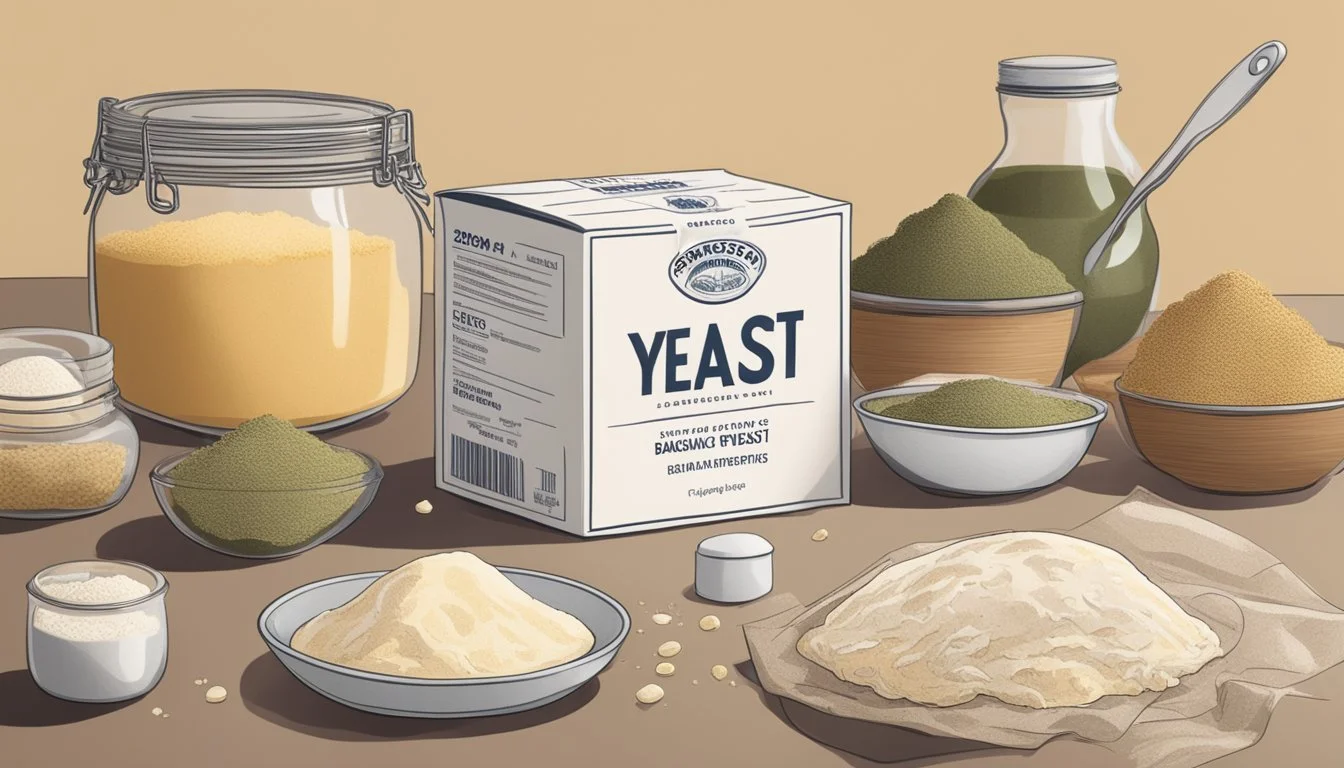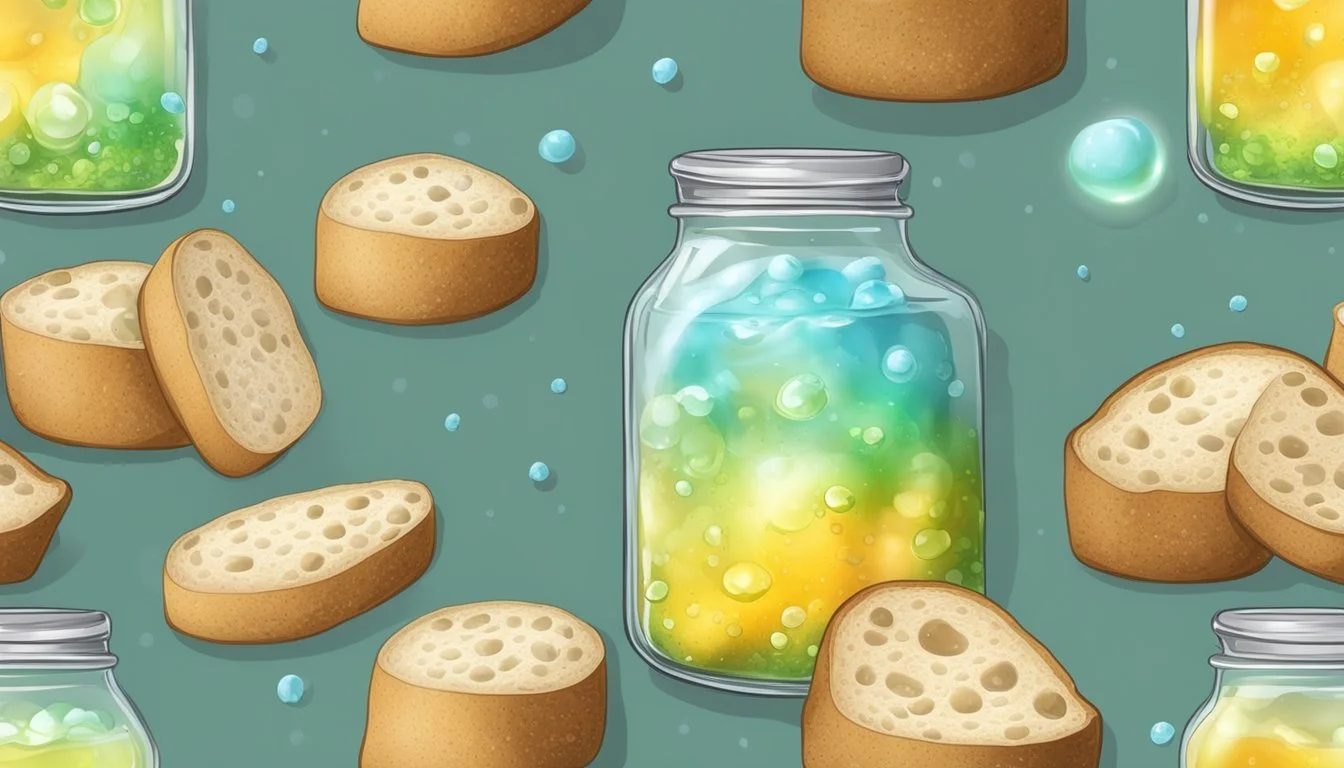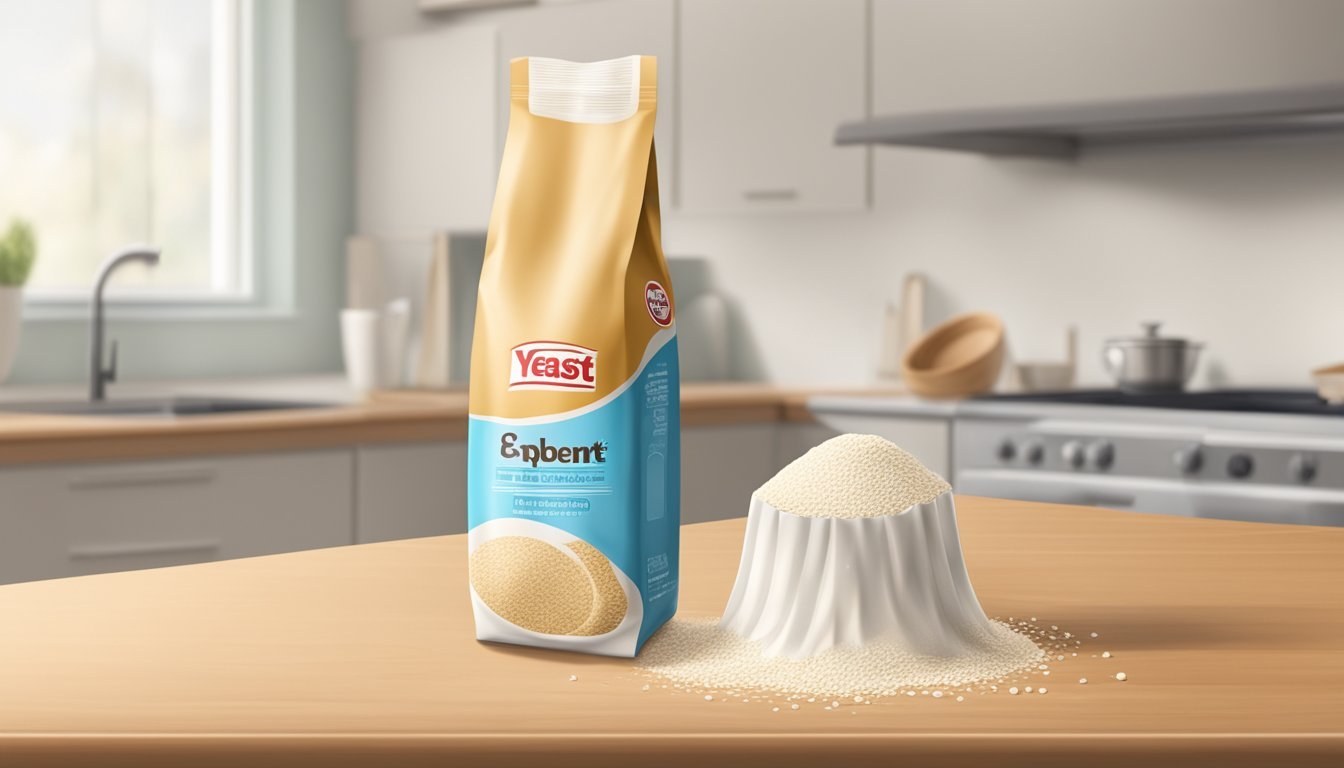Does Yeast Go Bad?
Understanding Shelf Life and Storage Tips
Yeast is a crucial ingredient in baking, responsible for giving rise to an assortment of breads, pastries, and other baked goods. Over time, the potency of yeast can diminish, affecting its ability to make dough rise effectively. There are different types of yeast, such as fresh yeast, dry yeast, and active dry yeast, each with its own characteristics and shelf life. The viability of yeast is influenced by how it is stored and its age from the date of packaging.
Bakers often wonder whether their yeast is still good to use. Fresh yeast, known for its short shelf life, generally lasts up to two weeks when refrigerated. Dry yeast, on the other hand, has a significantly longer shelf life owing to the removal of moisture during its processing. Unopened dry yeast can last for months past its 'best before' date, and if stored correctly, can remain potent for extended periods.
Conducting a simple proofing test can help determine if yeast is still active. By dissolving sugar into warm water, then adding the yeast and observing for signs of activity, such as foaming and rising, a baker can assess the viability of the yeast. It's important to note that water that is too hot can damage the yeast cells, rendering them inactive. Therefore, maintaining the correct temperature is key to successfully proofing yeast before use in any baking project.
Understanding Yeast
In the realm of baking, yeast is an indispensable ingredient known for its leavening properties, which are crucial to the texture and rise of baked goods. The type of yeast used can vary, significantly impacting the baking process.
Types of Yeast
Yeast can be categorized into several types, each with specific uses and benefits:
Dry yeast includes active dry yeast and instant yeast. Active dry yeast requires activation in warm water before use, whereas instant yeast can be mixed directly with dry ingredients.
Fresh yeast, also known as cake yeast, is a moist, perishable form of yeast often used by professional bakers.
Dry Yeast is shelf-stable and more convenient for long-term storage, with unopened packets remaining viable for up to two years.
Role in Baking
Yeast plays a crucial role in the baking process. It not only helps the dough rise by producing carbon dioxide but also contributes to the flavor and texture of the product:
Fresh yeast is appreciated for its ability to produce a more consistent rise in dough.
Both active dry yeast and instant yeast are used extensively in home baking due to their stability and long shelf life.
Leavening Agent
As a leavening agent, yeast is responsible for the fermentation process that occurs in dough. Here's how it functions:
Yeast converts the fermentable sugars present in the dough into carbon dioxide and ethanol, causing the dough to expand and rise.
The leavening process can be affected by the yeast's viability, which decreases over time, potentially altering the texture and volume of the baked goods.
Shelf Life and Storage
Yeast, an essential ingredient for baking, can lose potency over time. The shelf life of yeast varies based on its type and the conditions under which it is stored. Maintaining an optimal environment is crucial to preserving yeast's viability before it reaches its expiration or best before date.
Proper Storage Conditions
Yeast demands a cool and dry place to retain its effectiveness for the longest possible time. The ideal storage conditions involve placing the yeast in a sealed container away from moisture and heat. This prevents the yeast from absorbing any moisture which can lead to spoilage.
For dry yeast:
Store in a refrigerator or at room temperature in a pantry or cupboard, if it's going to be used relatively quickly.
Use an airtight container, especially once the package is opened.
For fresh yeast:
Always refrigerate, preferably in an airtight container.
Factors Affecting Shelf Life
The shelf life of yeast is influenced by several key factors:
Storage Temperature: Yeast stored at warmer temperatures tends to have a reduced shelf life.
Humidity: Exposure to moisture can activate and thus deplete the yeast prematurely.
Type of Yeast: Active Dry, Instant, and Fresh yeasts all have different longevity.
Packaging Integrity: Once the package is opened, yeast's shelf life decreases.
A consistently maintained refrigerated environment for an unopened package can extend a yeast's shelf life to two years from the packaged date.
Refrigerated vs. Pantry Storage
For optimal longevity, especially in the case of active dry and instant yeasts, refrigeration after opening is recommended. In a fridge, yeast can retain its quality for up to 4 months once the package is opened. It should be kept tightly sealed to prevent exposure to air and moisture.
Unopened dry yeast can last up to two years when stored properly in a pantry.
Fresh yeast should not be stored in a freezer but can be kept in the fridge for around 4 months.
Comparatively, shelf life is considerably shorter when yeast is stored at room temperature; hence, for extended storage, use of a fridge is advisable.
Signs of Spoilage
Yeast, over time, can deteriorate, affecting its potency and ability to make dough rise. Recognizing spoilage signs is essential to ensure that baking efforts are not wasted on expired yeast.
Visual and Texture Changes
Spoilage in yeast often presents itself through changes in appearance and texture. Yeast that is no longer viable may begin to form solid chunks or display a tendency to clump together, similar to how flour behaves when moisture is introduced. With fresh yeast, telltale signs include a discoloration and the development of mold. The presence of mold or noticeable organic growths are indicators that the yeast has been contaminated and should not be used.
Testing for Freshness
To test yeast for freshness, the tried and true method is the freshness test, also known as proofing. When conducting a freshness test:
Dissolve the yeast in warm water (ideally around 100°F to 110°F).
Add a small amount of sugar to feed the yeast.
Allow the mixture to sit for about ten minutes.
A healthy, fresh batch of yeast will react and produce a foamy layer on top of the water within this time frame, indicating it is still active and capable of inducing a proper rise. If the mixture does not foam, the yeast's cells are likely no longer viable, pointing to spoilage and loss of leavening power.
Usage and Effectiveness
The effectiveness of yeast in baking is directly influenced by its freshness and proper activation. Both factors play crucial roles in ensuring that baked products rise adequately and have the desired texture and flavor.
Proper Yeast Activation
One of the key steps in baking with yeast is correct activation, which influences the efficiency of yeast as a leavening agent. The activation process typically involves dissolving active dry yeast in warm water, often between 100°F to 110°F (38°C to 43°C), to rehydrate and "wake up" the dormant yeast cells. A pinch of sugar may be added to the mixture to provide immediate nourishment to the yeast, enhancing activity.
Correct Temperature: Water that is too hot, above 140°F (60°C), can kill yeast cells, while cold water will not activate them effectively.
Time: Yeast should begin to foam and bubble within 5 to 10 minutes after mixing with the warm water and sugar, indicating that it is active and ready to use.
Impact on Baking Results
The freshness and activity level of yeast has significant implications on baking outcomes. Fresh yeast imparts a reliable rise to breads and other baked goods, creating the desired light and airy texture. Its ability to convert sugars into carbon dioxide gas and alcohol through fermentation is what causes dough to expand and rise.
Interaction with Dry Ingredients: When mixed with flour, yeast aids in gluten development, which is essential for the dough's elasticity and structure.
Comparison to Other Leaveners: Baking powder and baking soda are chemical leaveners that release carbon dioxide when exposed to moisture and acid (like lemon juice, vinegar, buttermilk, or cream of tartar), but they do not contribute to the flavor and texture of the dough in the same way yeast does.
In summary, successful yeast-leavened baked goods rely on using fresh, active yeast and correct proofing techniques, taking into account specific temperature and timing for optimal yeast activity.
Extending Yeast's Usability
Proper storage methods can significantly extend the usability of yeast, maintaining its potency for baking. Careful handling can circumvent the natural decline in viability over time due to exposure to unfavorable conditions.
Freezing and Reviving Yeast
Freezing yeast is an effective strategy to preserve its freshness. When placed in an airtight container or heavy-duty freezer bag, active dry yeast can maintain its efficacy well beyond its typical shelf life. It's crucial to remove as much air as possible before sealing the storage bag to prevent moisture buildup.
To activate frozen yeast:
Remove the desired amount of yeast from the freezer.
Allow it to thaw at room temperature.
Test yeast freshness by proofing a small portion in a mixture of warm water and sugar; look for bubbles or foam, which indicates that the yeast is still active.
Substitutions and Alternatives
In scenarios when fresh or active dry yeast isn’t available, various yeast substitutes may come in handy. Common alternatives include baking powder, baking soda mixed with acid (like vinegar or lemon juice), or a sourdough starter. However, these substitutions may alter the texture and flavor of the final product.
To test yeast without proofing:
Yeast freshness test: Mix equal parts flour and water with a small amount of yeast. If it begins to form bubbles and rise within 10 to 15 minutes, the yeast is still potent.
When using yeast substitutes, remember that these might not work identically to yeast in recipes, and adjustments to proportions or methods might be necessary.
Practical Tips and Tricks
When baking breads or cakes, a baker's success largely depends on the vitality of yeast. Ensuring yeast is effective involves both smart storage and keen awareness of its condition.
Maximizing Yeast Vigor
Storing Yeast: To maximize the shelf life of yeast, it should be stored in a cool, dry place. If the yeast is unopened, a pantry or cupboard away from sources of heat and moisture works well. Once opened, the remaining yeast lasts longer if stored in an airtight container in the refrigerator or freezer. Dated labels help track how long the yeast has been stored.
Freshness: Fresh yeast typically lasts for two weeks in the refrigerator, whereas dry yeast has a longer shelf life. Dry yeast can last up to four months in the pantry and six months or more in the refrigerator or freezer if properly sealed.
Best-by date: Pay attention to the "best-by" date on packets as a general guideline for when to use it by, although dry yeast can often still be viable past this date.
Granulated Sugar Trick: Adding a pinch of granulated sugar to the yeast during proofing can help assess its health. Active yeast will feed on the sugar and produce bubbles, indicating that it is still potent.
Common Yeast-Related Queries
Yeast Spoilage: Can yeast go bad? Yes, but not in the traditional spoilage sense. Instead, it loses potency over time, which affects its ability to rise dough.
Assessing Effectiveness: To tell if yeast is bad without wasting ingredients, one can conduct a simple test:
Dissolve a teaspoon of sugar into half a cup of warm water (100-110°F).
Stir in the yeast and wait for 10 minutes.
If the mixture bubbles and froths, the yeast is active and can be used.
Food Safety: While yeast spoilage is not a typical food safety concern, using ineffective yeast can result in poorly leavened baked goods. Always inspect yeast for effectiveness before use, especially if it's been stored for an extended period.





